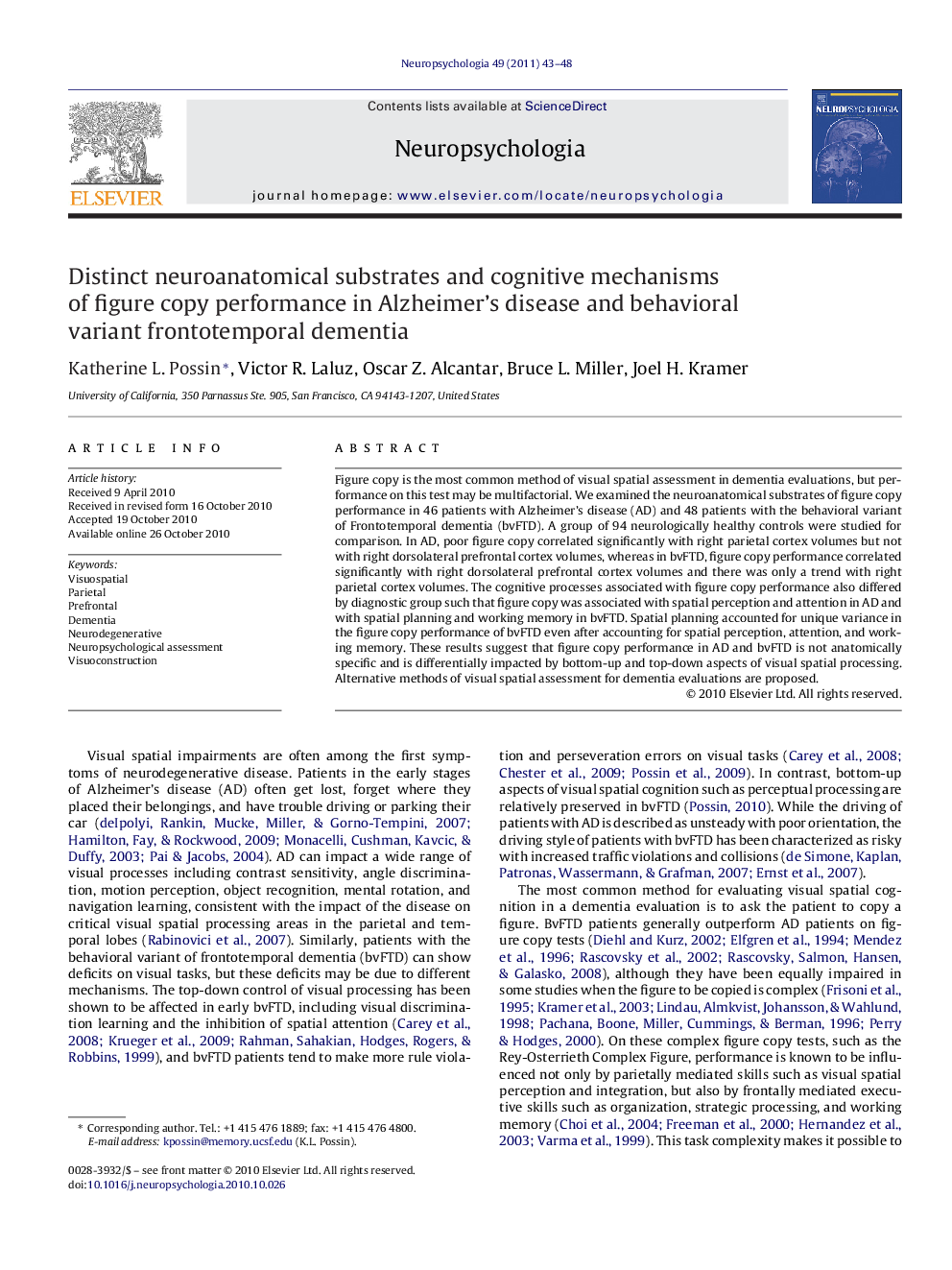| Article ID | Journal | Published Year | Pages | File Type |
|---|---|---|---|---|
| 944955 | Neuropsychologia | 2011 | 6 Pages |
Figure copy is the most common method of visual spatial assessment in dementia evaluations, but performance on this test may be multifactorial. We examined the neuroanatomical substrates of figure copy performance in 46 patients with Alzheimer's disease (AD) and 48 patients with the behavioral variant of Frontotemporal dementia (bvFTD). A group of 94 neurologically healthy controls were studied for comparison. In AD, poor figure copy correlated significantly with right parietal cortex volumes but not with right dorsolateral prefrontal cortex volumes, whereas in bvFTD, figure copy performance correlated significantly with right dorsolateral prefrontal cortex volumes and there was only a trend with right parietal cortex volumes. The cognitive processes associated with figure copy performance also differed by diagnostic group such that figure copy was associated with spatial perception and attention in AD and with spatial planning and working memory in bvFTD. Spatial planning accounted for unique variance in the figure copy performance of bvFTD even after accounting for spatial perception, attention, and working memory. These results suggest that figure copy performance in AD and bvFTD is not anatomically specific and is differentially impacted by bottom-up and top-down aspects of visual spatial processing. Alternative methods of visual spatial assessment for dementia evaluations are proposed.
Research highlights▶ Figure copy performance in neurodegenerative disease is multifactorial. ▶ In Alzheimer's disease, figure copy is associated with right parietal cortex volumes and spatial perception and attention. ▶ In the behavioral variant of Frontotemporal dementia, figure copy is associated with right dorsolateral prefrontal cortex volumes and spatial planning and working memory.
